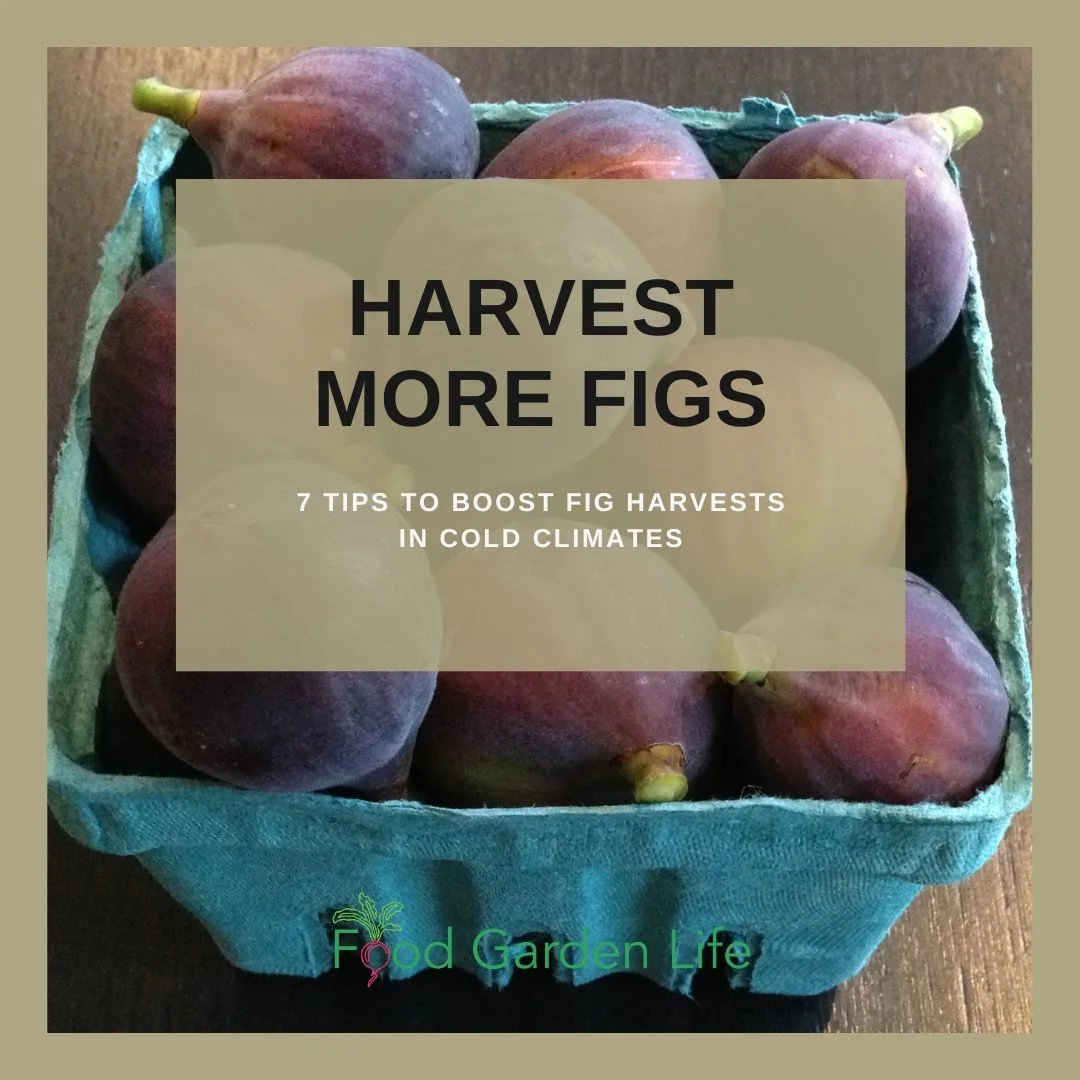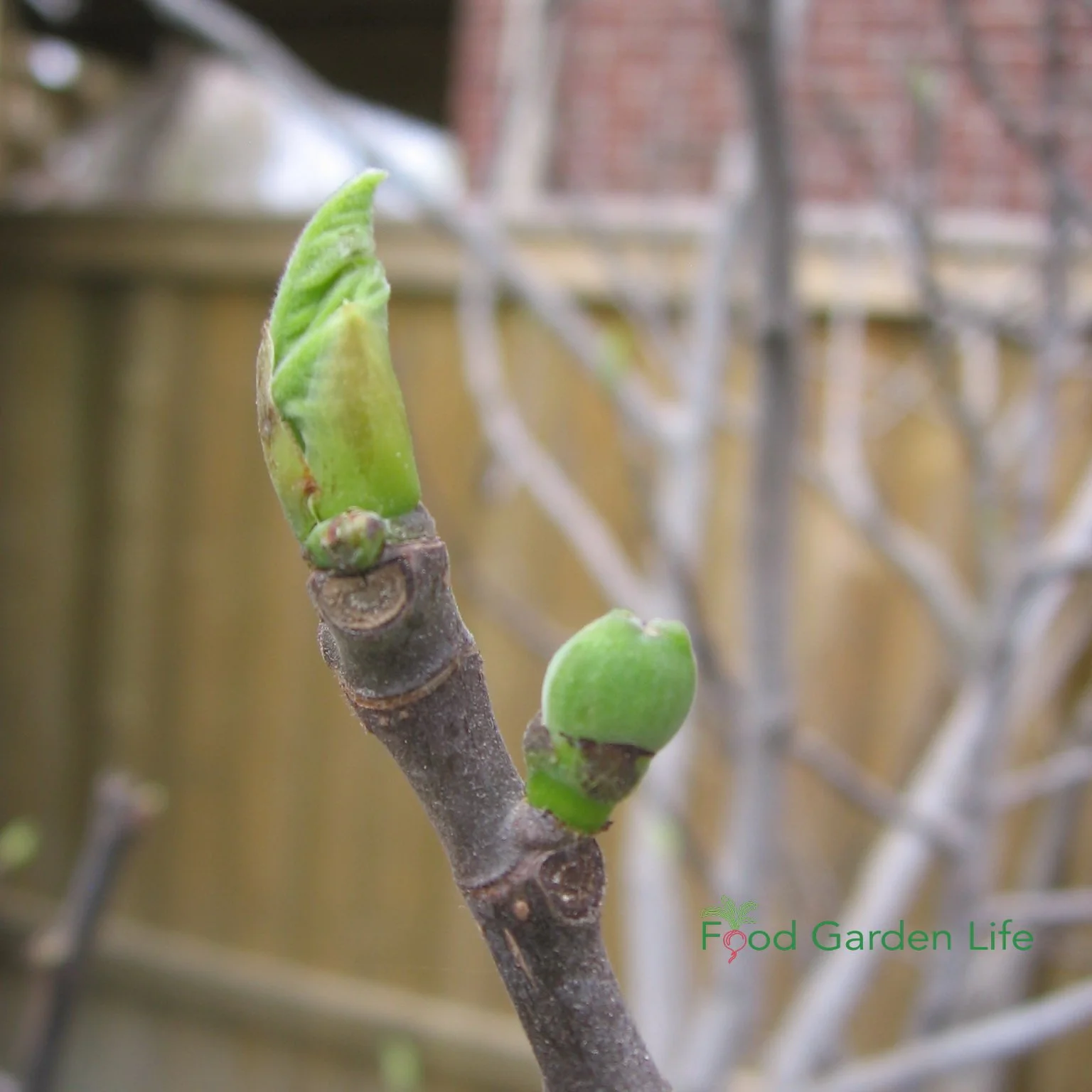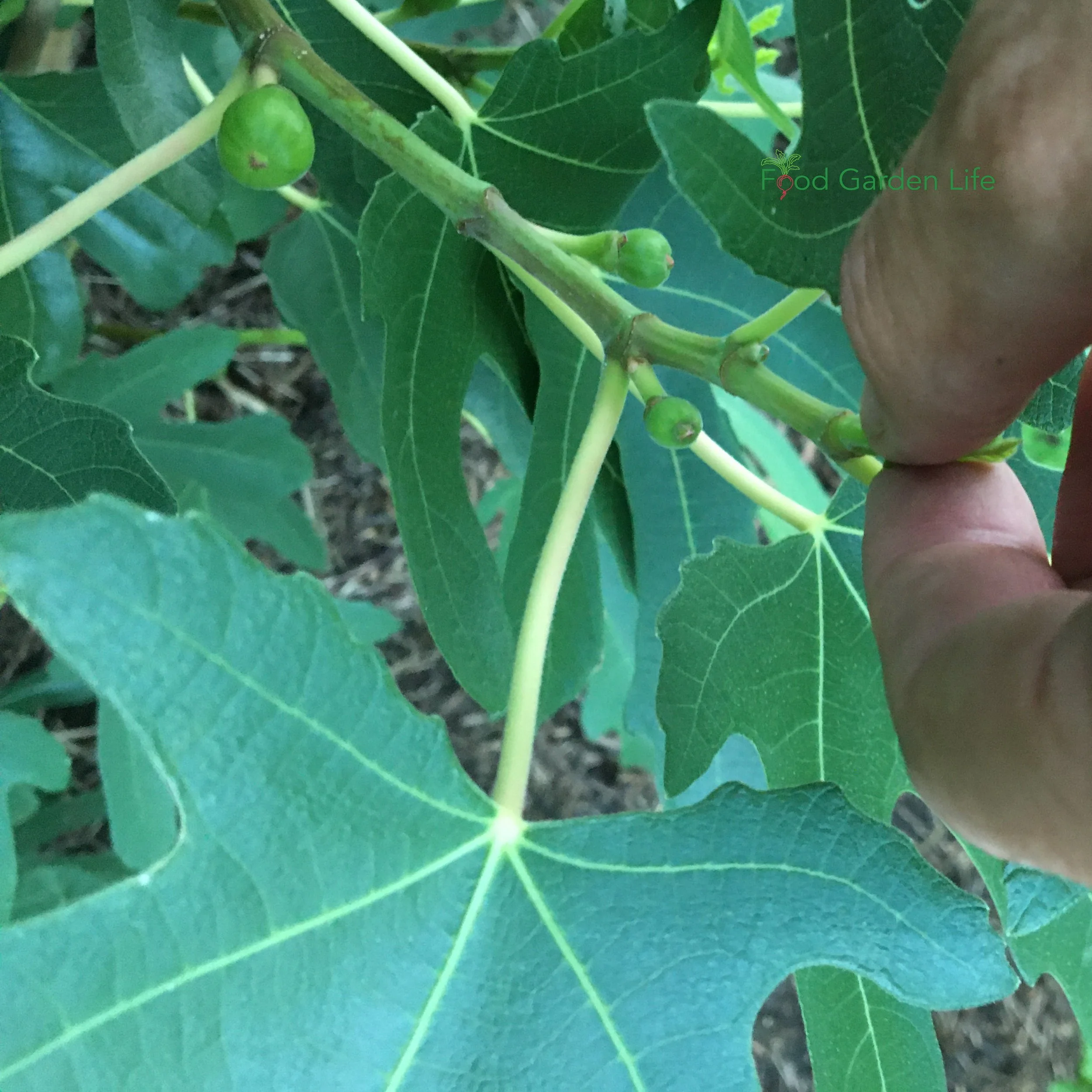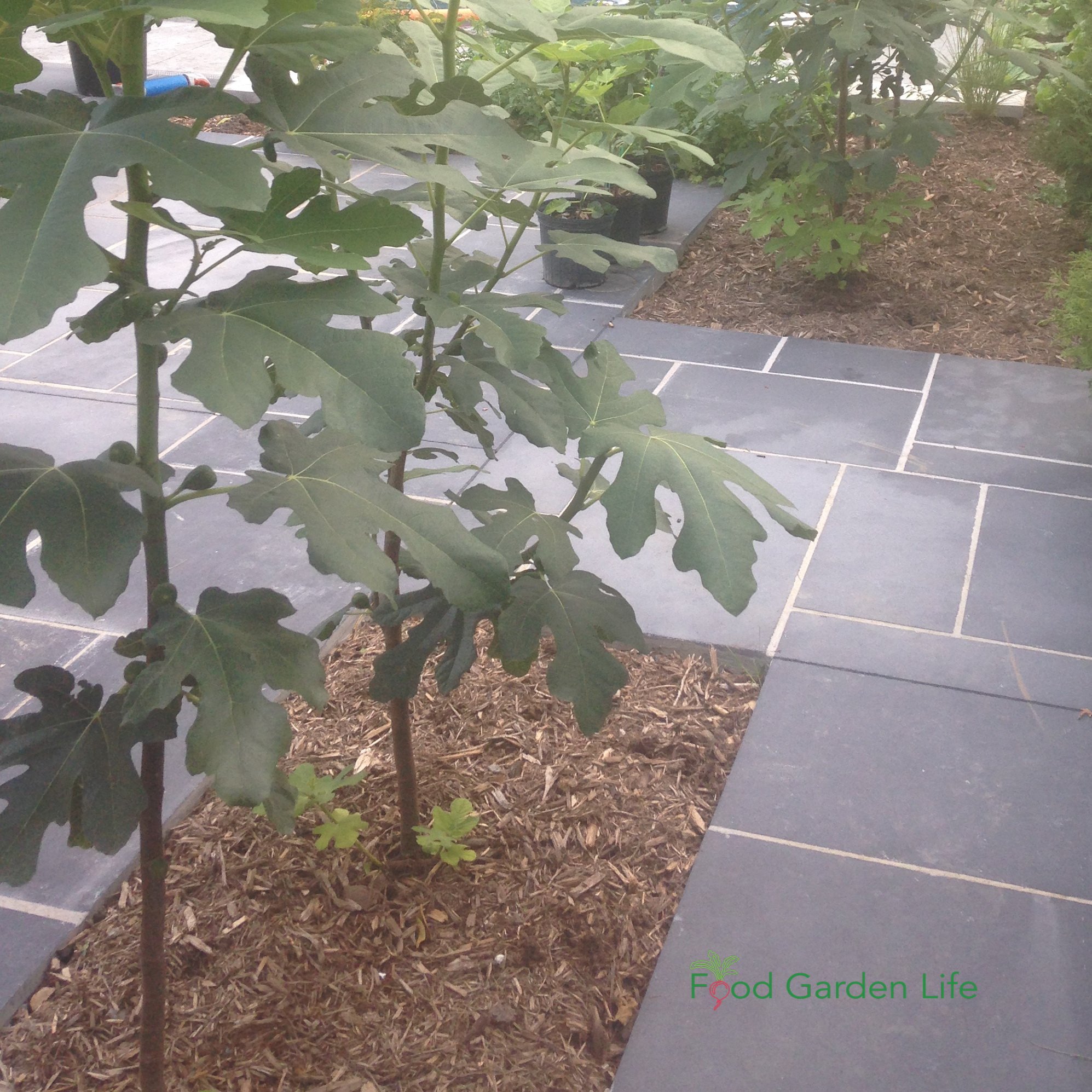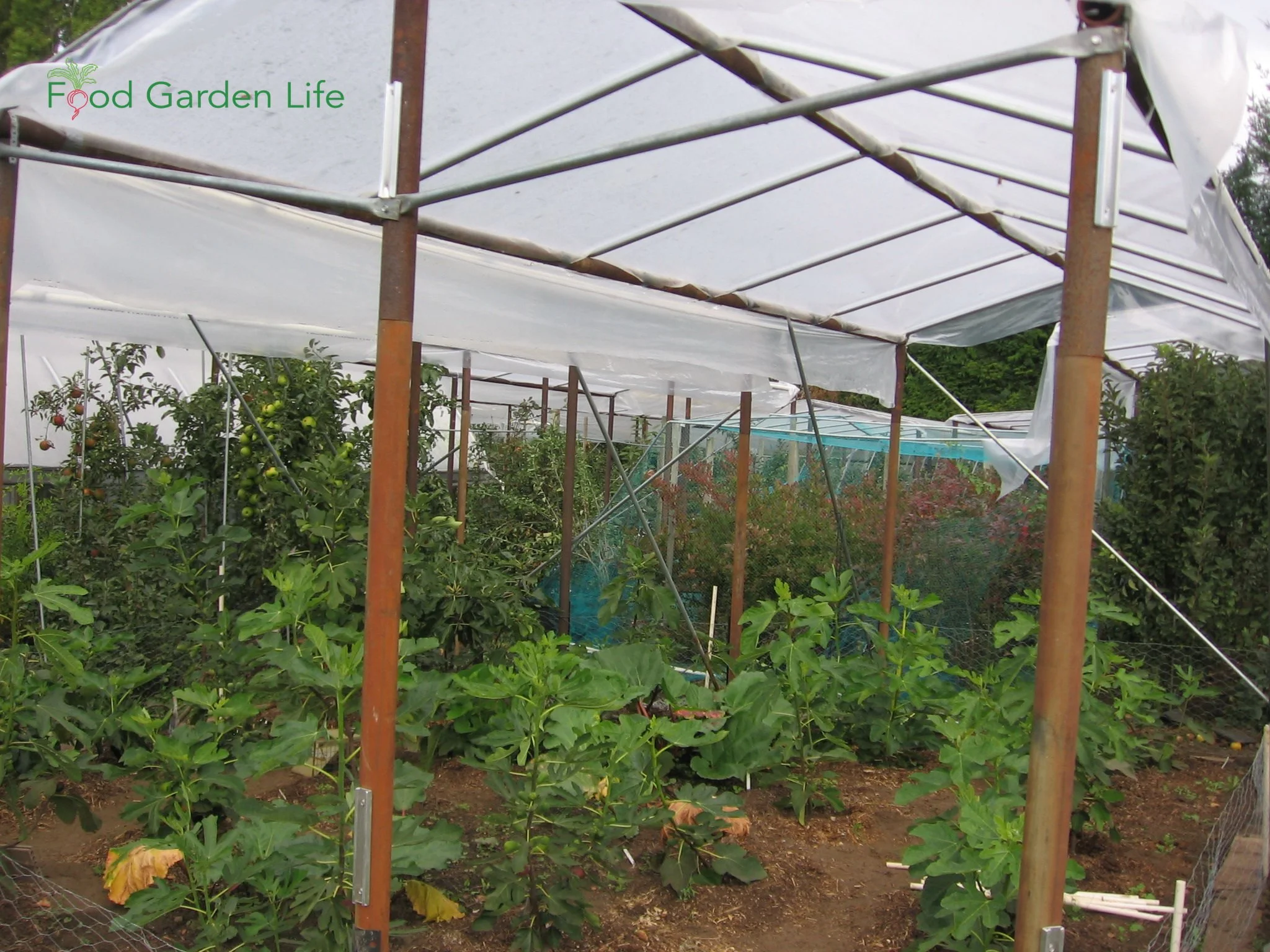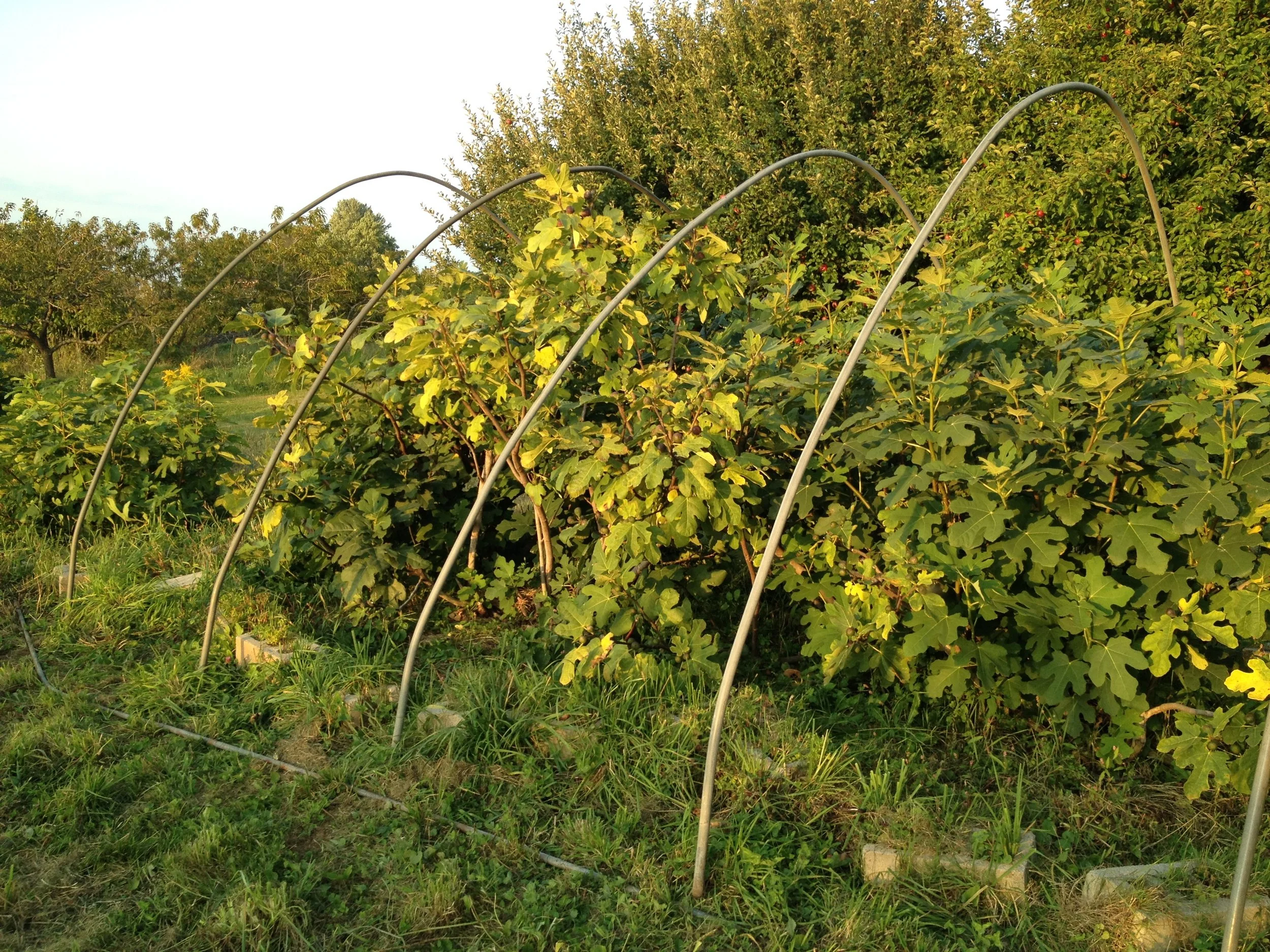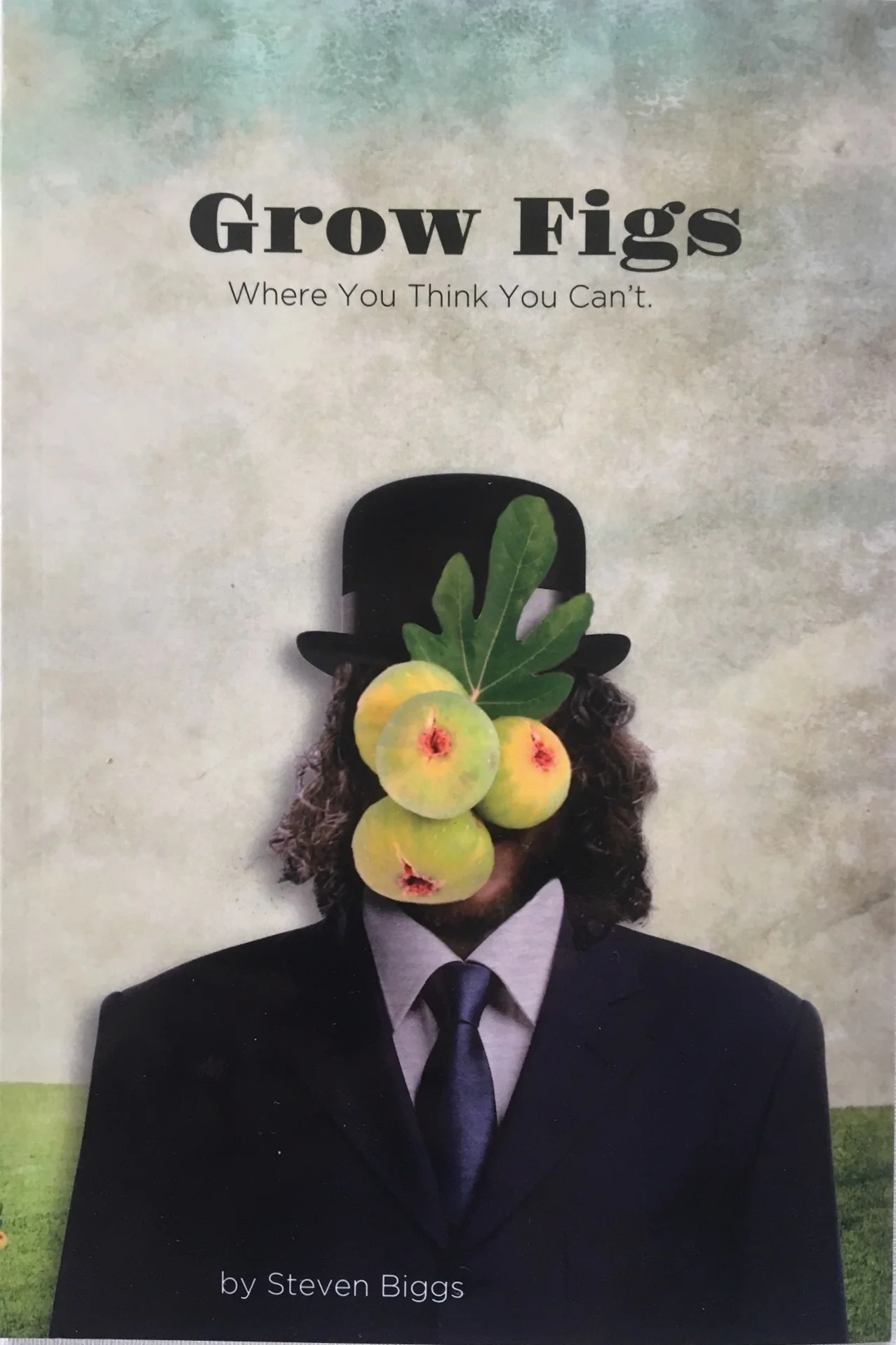By Steven Biggs
Boost Your Harvest with Growing Methods, Location, and Fig Tree Cold Hardiness
Fig tree cold hardiness is just one part of getting a good fig harvest in cold climates.
Here are the things to think about to harvest more ripe figs if you’re gardening where fig-growing is borderline—or where fig trees are not hardy and need winter protection.
7 Tips to Boost Your Cold-Climate Fig Harvest
Grow Cold-Hardy Fig Varieties
These fig varieties are the survivors—the fig trees that come through more cold that other fig varieties can take without dieback. Unscathed.
Look for cold-hardy fig varieties.
Some fig varieties simply take more cold than others. For example, a well-known hardy fig variety is ‘Chicago Hardy.’
(It’s the same with most plants, actually. You’ll find apples much farther north than you might expect—because some varieties are very cold-tolerant.)
It becomes even less important if you’re growing potted fits that are stored somewhere protected.
Along with the cold hardiness of a variety, there are other things that affect how much cold a fig tree can take. Here’s more on fig tree cold hardiness.
Find out some of the top cold-hardy fig varieties for cold climates.
2. Choose Fig Varieties that Ripen Early
A breba fig, growing early in the season on wood from the previous season. Breba figs ripen earlier than the “main crop” figs in late summer.
If you’re in a cold zone, chances are that the limiting factor to fig ripening is the season length. There’s never enough time for figs to ripen (or, at least, not as many figs as you want.)
So pick a variety that ripens early.
Here are 2 types of figs to consider as you look for early-ripening fig varieties:
Breba Figs
If you’re in a cold climate, make sure you have a fig variety that produces “breba” figs – the figs that form mid-summer on growth from the previous season.
They’re the earliest. Period.
Find out some of the top breba fig varieties for cold climates.
Early Ripening Main Crop Figs
Look for fig varieties with a main crop that ripens early.
The “main crop” figs are the ones that form on wood from the current season. My favourite is Ronde de Bordeaux.
Find out some of the top early-ripening fig varieties for cold climates.
Find Out How to Grow Your Own Figs
Harvest more figs this year! Grow Figs in Cold Climates Masterclass shows you how to grow a fig tree in a pot, or outside with protection. So you can harvest lots of figs!
3. Grow a Fig Bush
A well-branched bush usually has more branches than a tree. And more branches means more figs.
Plus, if you’re in a cold climate, more branches is like having fig insurance…so if some die off over the winter, you’re more likely to have a few left to give you figs.
4. Wake up Fig Trees Early
Wake up fig trees early. Here are fig trees getting an early start with tomato seedlings, in early spring.
Because season length is a limiting factor to fruit ripening, waking up fig trees early in the spring can give you more figs in the fall. You’re just giving them a longer growing season.
The challenge for a lot of cold-climate fig growers is finding a spot that’s protected, because once your fig trees come out of dormancy, the new growth is damaged by cold winds and frost.
One solutions is to create a temporary shelter for an early wake-up.
Or, if you are growing potted figs, bring them outside on warm days to help them wake up. But put them back into a protected spot when it gets cold. (I call this the “fig shuffle.”
5. Pinch Fig Shoot Tips
Pinch shoot tips after 4 or 5 main-crop figs have formed.
The new branches on your fig tree keep getting longer all summer, with more and more little main-crop figs. But, realistically, only the first few main crop figs will ripen in a cold climate.
So after 4 or 5 little main crop figs are growing on a branch, pinch the shoot tip to slow down branch growth.
This pinching will favour fruit development.
6. Turn up the Heat
Paving materials take up heat by day and release it as temperatures cool in the evening, giving extra heat to ripen figs.
Choose a warm location. More heat means more figs ripening in your short season.
If you’re growing potted figs, place them somewhere warm:
On a dark-coloured driveway or patio
Next to a brick wall that captures and releases heat from sunlight
When planting fig trees in the ground, look for somewhere warm:
A south-facing exposure next to a wall
Next to a sunny driveway
You can also provide more heat with a simple structure such as a greenhouse with no walls. (Here’s how one fig grower in the cool-summered Pacific Northwest boosts summer heat to ripen main-crop figs.)
Ripening main-crop figs in the Pacific Northwest, where summers are cool, with the help of a greenhouse that has no walls. This greenhouse is not for winter protection—just to pump up the temperature in the summer.
7. Extend the Fall Fig-Ripening Window
Here’s what my friend Joe does for some of his figs: As cool weather arrives in the fall, he covers the hoops with clear plastic to extend the fig harvest for a few weeks.
If you want to ripen a few extra figs before winter, delay dormancy and keep those ripe figs coming!
You can delay dormancy by keeping your plants warm during cold spells. Cover in-ground fig plants with a temporary structure, or move potted plants into a protected location.
Pin this post!
More Information About Growing Figs
Books About Growing Figs in Cold Climates
Fig Masterclass
Find Out How to Grow Your Own Figs
Harvest more figs this year! Grow Figs in Cold Climates Masterclass shows you how to grow a fig tree in a pot, or outside with protection. So you can harvest lots of figs!

